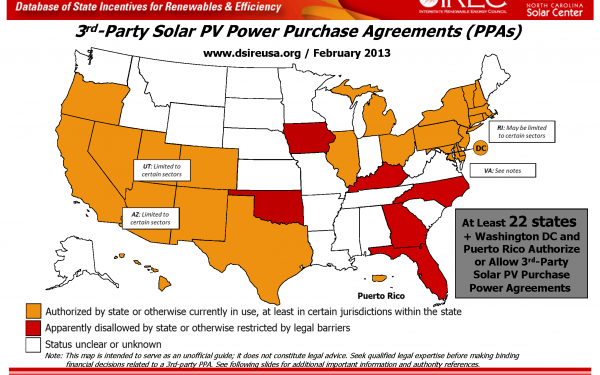Whether the electric utilities like it or not, more people are using solar energy for electricity than ever before. And they are saving money at the same time. A federal rulemaking about streamlining the process for connecting small solar energy supplies to the grid reveals the real issues: Solar is causing competition and utilities are slowing the policies that can lower consumer costs.
UCS is countering utility industry arguments that solar panel hook-ups should not be streamlined. The arguments are maddening. The utilities trade group, Edison Electric Institute, and one of the largest utilities, Southern California Edison are saying:
- Despite Southern California Edison’s award-winning installation of over $1.7 billion new “smart” meters, they are not able to collect customers’ minimum use (only maximum use). Finding the actual minimum use during the daylight hours is a better screen for judging the amount of solar that can be quickly added to a section of the grid than a rule of thumb applied to an estimate, which is the present practice.
- When Southern California Edison sought permission to install the smart meters, and charge consumers for the cost, they said that they would have the tools to organize the data for such tasks. While the meters themselves may not recognize day from night, there are some tried and true techniques to indicate the movement of the sun, ranging from the sundial to the digital clock. As this is a database problem, perhaps a “look-up table” with sunrise and sunset times can be added to the programs to serve this need.
- Utilities are contradicting themselves. On their websites, utilities with smart meters are promoting the ease of access to relevant data, and how the meters can support the adoption of renewable energy.
What some utility companies (and people) don’t know about the sun
By keeping the generator connection process simple, home and business owners and solar installers completed 90,000 solar panel installations last year in the U.S. The home or business with solar panels is still connected to the electricity grid, and we should all acknowledge that these customers still need the grid to obtain electricity at night. Designs for solar off-grid electricity are much more expensive.
Solar panels on the roof means less energy is purchased from the electric company, and people seem to like that. With the innovation of customers buying electricity from solar companies (known as “Solar PPAs,” which are present in many states as the map below indicates), would-be solar customers don’t have to put money down to put solar up.

States allowing energy sales from rooftop solar
UCS is supporting the spread of solar in a rulemaking at the Federal Energy Regulatory Commission that is seeking to streamline the process for small generators that install solar photovoltaic (PV) panels on the rooftops of homes and businesses.
- The Commission should complete the reforms in the notice of proposed rulemaking.
- UCS supports using the actual data instead of relying on estimates and rules of thumb. The Commission should order data collection and should reject utility arguments about inability to obtain minimum load data where new meters have been installed.
- Utilities must recognize the benefits on the grid of solar, including voltage support. The Commission should direct utilities on voltage support to maintain just and reasonable rates.
- The state utility regulatory commissions must fix the utility companies’ incentive to sell more electricity. A new revenue model is required to pay for the grid with less electricity sold. UCS supports making a fair assessment of the benefits of solar and energy efficiency, and of the costs to keep wires connecting our communities to the power grid.
If this sounds like the utilities are being obstructionist, consider how the utility industry got this stage. The democratic process at the federal and state levels has created several pro-solar policies. Federal tax credits for solar are significant. These were included in energy legislation signed by George W. Bush after the elected Congress came together in 2008 on energy and tax policy. The majority of states’ legislatures created Renewable Energy Standards that promote new renewable generation, many with solar-specific targets.
Not all electric utilities have opposed these choices made by our democracy. The utilities numbered 3 and 7 of the top 10 in the recently released ranking of U.S. electric utilities building their own solar are not-for-profit. See the listing utilities ranked by solar Watts-per-Customer. These tend to be small utilities that have to pay the larger utilities for their use of the big company’s transmission. Ohio put three municipally-owned utilities on this list of leaders, with transmission savings as a driver. (There is no need to pay for long-distance delivery when the solar energy is produced and used locally.)
For all the fun here, this is deadly serious. The utilities are actively seeking to reverse the policies adopted by the democratic process by feigning ignorance, and hiding their business interest behind the claims of maintaining reliability. Elsewhere they are saying renewables and conservation efforts are causing a death spiral.
Whack-a-mole or adapt to new realities
The sun will rise over the utility industry. They are in for a long, hot stretch. As customers select new technology that meets their own goals and aspirations, such as using less electricity and getting their supply from solar, the utility industry won’t be able to wish away the day of reckoning.
If the state regulators fail to address the utilities incentives and behaviors that seek to deny customer participation in market, they will enable the utilities to play Whack-a-Mole with each new innovation and energy-saving effort.
